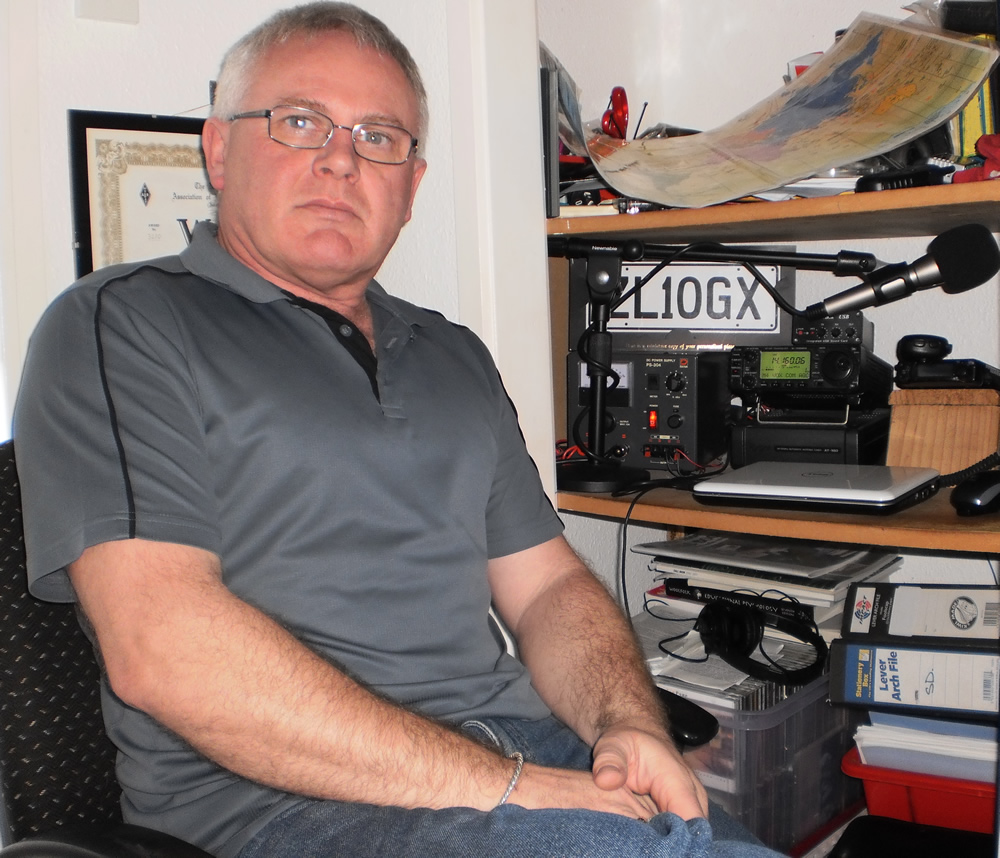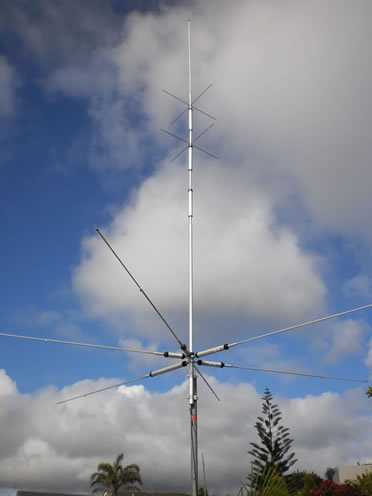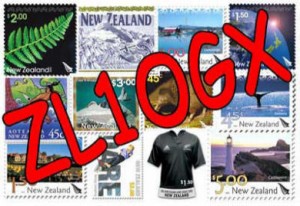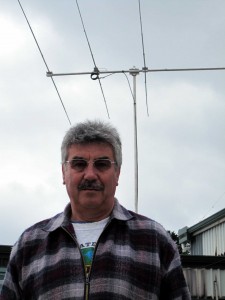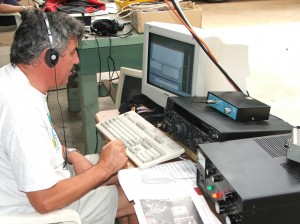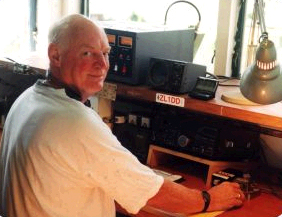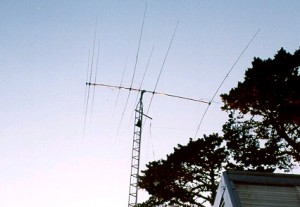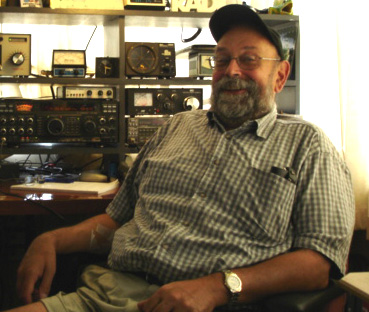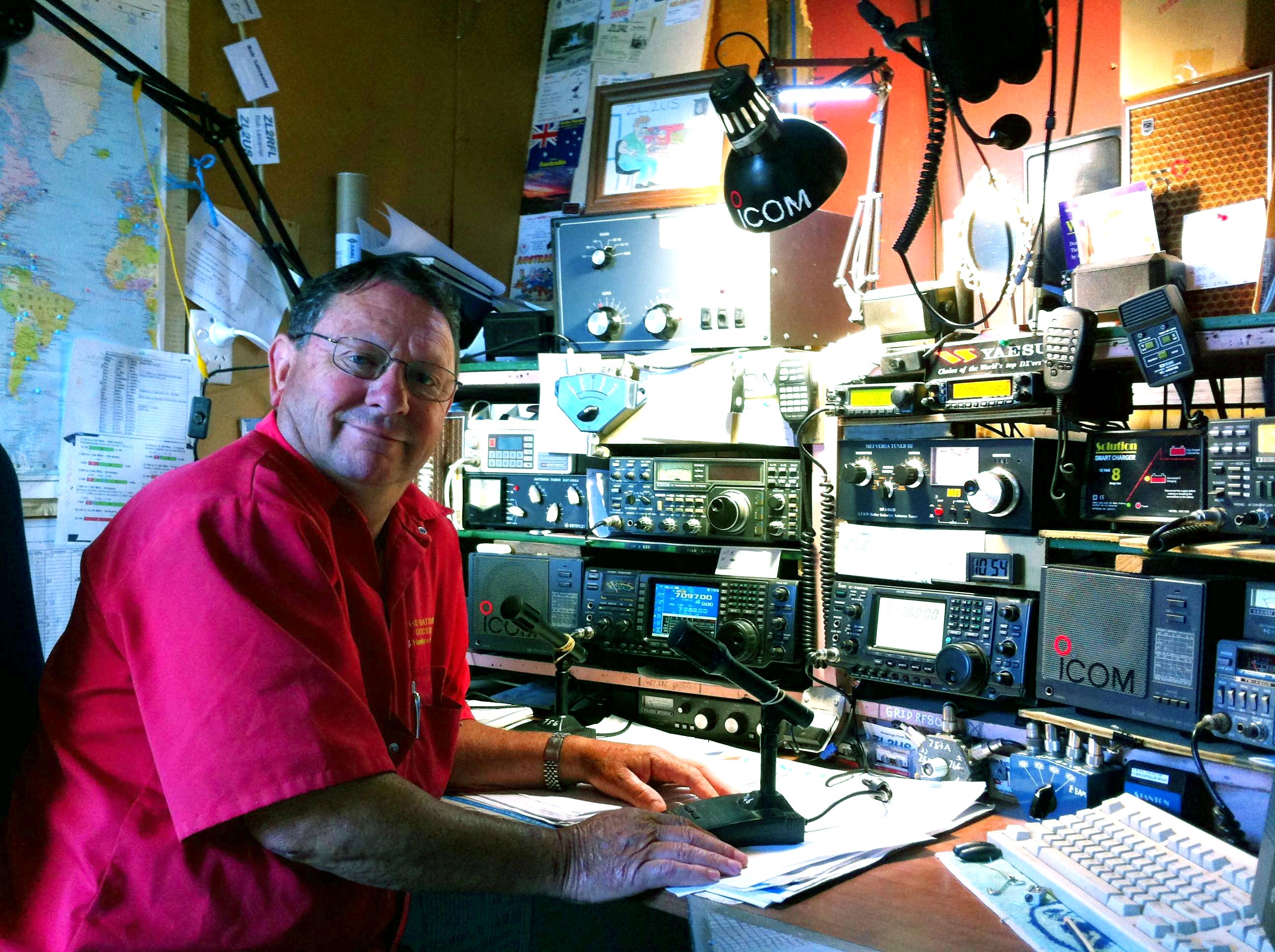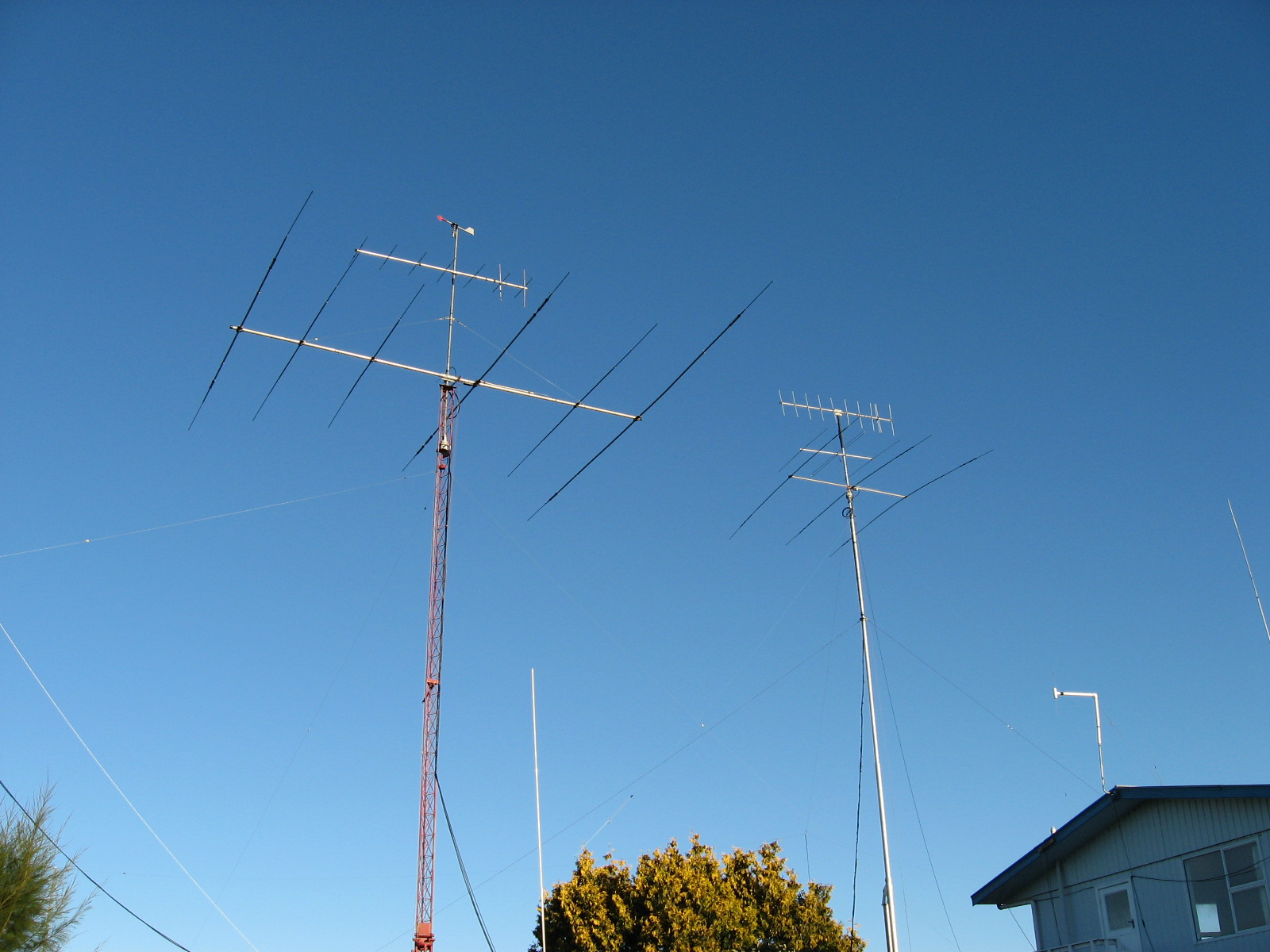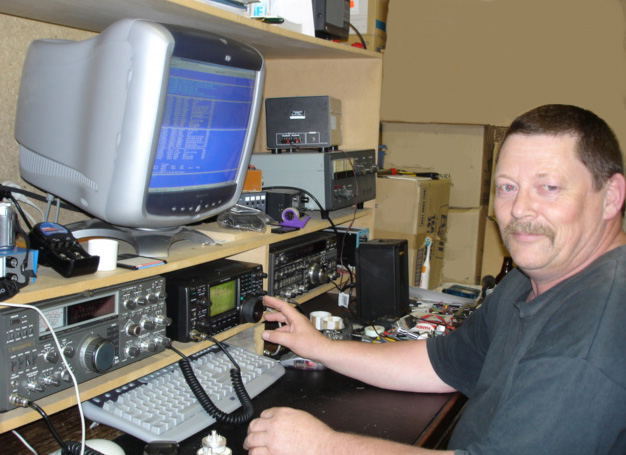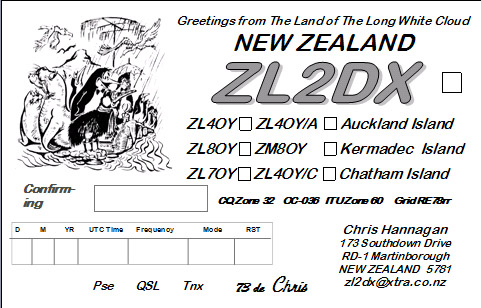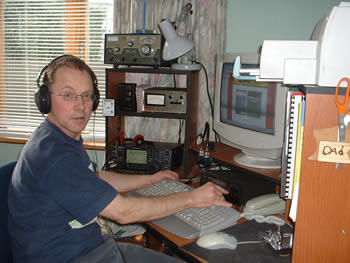Updated: 15 Feb 2015
This is a chronology of how radio and later Amateur Radio developed in New Zealand. It was compiled byt NZART and is on their website NZART Website
1888
George Kemp begins wireless experiments in Gisborne.
1899
John Cooper demonstrates wireless telegraphy at Canterbury University.
1902
James Logan sends Morse code messages across Wellington Harbour. W. P. Huggins in Timaru and Joe Passmore in Dunedin also send messages over short distances.
1903
Establishing an amateur radio station without official permission is banned.
1908
Amateur stations in Dunedin send the first official wireless messages.
1909
Amateurs operating illegally are deemed to have interfered with naval communications.
1911
All outside antennae are banned.
1912
First reported use of amateur radio in an emergency occurs when a ship is in distress at the entrance to Wellington Harbour and amateurs operating pick up a distress call.
1914
All amateur activity is completely banned during wartime. Some amateurs continue to operate illegally.
1921
Provisional receive-only permits are issued.
1922
Ralph Slade becomes the first New Zealand amateur to receive USA amateurs (5 November).
Special telephony permits are issued and wireless telephony is used legally for the first time.
1923
Regulations for Amateur, Experimental and Broadcasting Stations are gazetted (18 January). The minimum age for holding an amateur radio licence is set at 14. Maximum power is 50 watts.
First amateur radio contact with Australia between Frank Bell at Shag Valley in Otago (using the call sign BELL) and Charlie Maclurcan 2CM in Sydney, on 160 metres (26 April).
Frank Bell 4AA in Shag Valley and Dan Wilkinson 2AB in Motueka become the first licensed amateurs (7-8 June). 40 licences are issued by the end of the year.
1924
New Zealand is allocated the call sign prefix Z.
Ivan O’Meara Z2AC in Gisborne and Carlos Braggio RCB8 in Buenos Aires make the first NZ-South America contact and set a world distance record (22 May).
Frank Bell Z4AA at Shag Valley and Wallace Magner 6BCP in San Pedro make the first NZ-North America contact (21 September).
First round-the-world two way radio contact held between Frank Bell Z4AA at Shag Valley and Cecil Goyder G2SZ in London on 92 metres (18 October).
1925
A single license replaces the previous two grades. Maximum power is now 100 watts. The number of licences issued reaches 100.
Representatives from twenty-three countries meet in Paris to form the International Amateur Radio Union (18 April). Frank Bell Z4AA is elected as a member of the Executive Committee.
1926
The New Zealand Association of Radio Transmitters (NZART) is formed in Auckland (16 August). Annual subscription fee is set at five shillings (50 cents).
Joe Johnson Z2GA obtains the first portable licence.
Gordon Smithson Z1AF makes the first NZART Official Broadcast.
1927
The International Telecommunication Union (ITU) Conference in Washington establishes internationally-agreed frequency bands. NZ is allocated the prefix OZ.
The Sangster Shield contest for low power operation starts.
1928
The first issue of ‘Break-In’ is published (January) and provided free to NZART members.
First crystal-controlled transmitter is built and operated by Gordon Brown OZ4AE and Arnold Grubb OZ4AL.
The first overseas 10 metre contact is conducted between Hilton Arthur OZ1AN and OA3CP in Melbourne (23 September).
1929
Provisions of the Washington Radio Telegraphic Convention of 1927 come into force restricting the frequencies available to amateurs.
NZART is admitted to International Amateur Radio Union (IARU).
NZ is allocated the prefixes ZK to ZM. It opts for ZL for mainland stations.
The NZART QSL Bureau is established.
NZART negotiates a reduction in licence fee from £2/2/- to £1/10/- ($3).
1930
World record 10m contact held between Norm Edwards ZL1AA and F8AW in France.
Myrt Earland ZL3AG becomes the first woman licensed (YL) operator.
1931
Hawke’s Bay Earthquake occurs (3 February) and it becomes the genesis of the formation of the Radio Emergency Corps (later AREC).
1932
The Radio Regulations are gazetted. The Morse test is increased to 12 wpm. All amateurs are allowed to use the 160m and 80m bands.
Radio Emergency Corps is formed (6 March). The first national REC field-day is held.
1933
NZART log book is made available at 1/6d (15 cents).
Official broadcasts are resumed at 15 wpm.
1934
First contact between aircraft and a ground station is established by “Casey” Harris ZL4CA and Ray McConnell ZL4BV in Otago, on 5 metres (60 MHz).
NZART becomes an Incorporated Society.
1935
The first NZART Call Book is published.
TV experiments are authorised on the 5m band and below 1m.
Norm Laugesen becomes the first NZART Honorary Life Member.
The VK/ZL/OC contest is started.
1936
The number of amateurs reaches 1000.
1938
Dave Brown ZL1HY is the first ZL to be awarded the DXCC.
The first TV article is published in Break-In.
1939
Amateur radio activity is banned for the duration of World War II. Amateur equipment is used in war effort. Amateurs serve as wartime radio operators.
Break-In published is in cyclostyled form throughout WWII (1939-1945).
1945
Wartime ban on amateur radio is lifted (“H-Night” 8 December). Amateur operations resumes on 3.5 to 3.96 MHz and 58.5 to 60 MHz only.
Morse test is increased to 15 wpm for HF permit holders.
1946
Further pre-war bands are released and overseas contacts resume. 50 to 54 MHz made available for use.
The Memorial Contest starts.
ZC1 army surplus transmitter/receivers are sold for 20 pounds ($40).
NZART Official Broadcasts recommenced by Doug Gorman ZL2IY.
1948
First article on SSB (nee SSSC) is published in Break-In.
First contacts on 2400 MHz conducted by Bill Collett ZL4BP and Jeff Walker ZL4DH.
Worked All Pacific and Worked All Branches awards are introduced.
1949
The Maori language is allowed on air in addition to English.
REC is re-named Amateur Radio Emergency Corps (AREC).
144 to 148 MHz is made available for use.
World record 50 MHz contact held between Maurice Wills ZL4GY and K6BF.
1951
World record 144 MHz contact over 1340 miles held between Dave Buchanan ZL3AR and VK2AH.
1952
National Field day and Frequency Measuring Contests start.
First SSB contacts held between Jack Mason ZL1QS and Maurie Walker ZL1AU.
21.0 to 21.45 MHz is made available for use.
1953
Old Timers’ Club is formed (31 May).
Minimum age to obtain an amateur licence is increased to 16.
New Zealand reportedly has more amateurs per capita than any other country.
1954
First two-way contact on 10 GHz held between Jack King ZL2AKP and Ron Morgan ZL2GQ.
First transistor article appears in Break-In.
Roy Pottinger ZL4GP makes the first transistor transmitter contact in and sets a world distance record transistorised contact with a Christchurch amateur.
1956
First two-way RTTY contact held between NZ and USA, by ZL1WB and WØBP.
1958
On-air demonstration of 405-line TV on 420 MHz conducted by ZL2APC.
First Boy Scout Jamboree on the Air (JOTA) held.
1959
50 to 51 MHz withdrawn for amateur use to allow use by commercial TV.
First NZ-GB RTTY contact held between Alec Hyndman ZL3HJ and G3CQE.
1960
Jock White ZL2GX achieves the world’s first DXCC300.
1961
OSCAR-1 (Orbital Satellite Carrying Amateur Radio) is launched (14 December). Trevor Kendrick ZL2HP is the first NZ amateur to hear it.
1962
Women Amateur Radio Operators’ club (WARO) is formed.
Maximum power limit is raised from 100 watts to 150 watts final anode input.
Minimum age for amateur licence is returned to 14.
1963
Doug Gorman ZL2IY is awarded an MBE in the Queen’s Birthday Honours for services to Amateur Radio and to Search and Rescue.
A non-Morse Technician licence grade is introduced for operation above 144 MHz.
1964
First hand-held 2metre band solid-state transceiver is demonstrated by Harry Burton ZL2APC.
1965
First all-electronic scanning receiver demonstrated by Harry Burton ZL2APC.
1966
Integrated circuits are first mentioned in Break-In.
1967
The establishment of beacons on 144, 432 and 1215 MHz is approved.
The use of slow-scan TV on HF bands is approved.
The Reciprocal Licensing Scheme starts.
1968
NZART attends the foundation meeting of IARU Region 3 Association in Sydney.
1969
ZM prefix is permitted for first time to celebrate the Cook’s Bi-centenary.
World record 144 MHz moon-bounce (EME) contact held between John Morgan ZL1AZR and Kjell Rasmusson SM7BAE.
Bruce Rowlings ZL1WB is appointed command station for OSCARs 5, 6 and 7.
1970
New Radio Regulations are introduced, with Grades I, II and III replacing the former two grades and the HF permit system.
Christchurch amateurs commission the first amateur beacon and the first VHF repeater.
1971
Roy Needham ZL1KG is the first amateur outside USA to receive the US Counties Award.
1972
All grades of operators are allowed to work through OSCAR-6 and subsequent satellites.
1973
Morse speed test is reduced to 12 wpm.
1974
ZM prefix permitted for use during the Commonwealth Games, Christchurch.
First full-colour ATV test-pattern transmitted by Doug Ingham ZL2TAR.
1975
Wellington VHF Group set a 3300 MHz world record contact between Mt Murchison and Mt Ruapehu.
1976
Golden Jubilee of NZART is celebrated with Sir William Pickering as guest speaker.
Use of 1803 to 1813 kHz is authorised.
First full-colour cover for Break-In is published.
1977
Novice grade licence is introduced.
1978
40 metre band is extended to 7.3 MHz on a non-interference basis.
The first ATV repeater is operational at Wellington.
First two-way contact on 24 GHz is conducted by Peter Williams ZL2ARW and John Yaldwyn ZL2TRV.
1979
The term of office for NZART President and Council is extended to 2 years.
50 to 50.15 MHz is introduced for use as a shared-use arrangement.
First 432 MHz E-M-E contact held with USA by ZL2BCG and K5JL.
Jim Jackson ZL2BCG and Graham Alderson ZL3AAD set the 432 MHz EME world record when contacting I5MSH.
The Tasman Sea is first crossed on 432 MHz by ZL1TAB and VK2BQJ.
Chuck Rademacher ZL1ADI wins the IARU Radiosport Championship.
1980
World record EME contact held between Graham Alderson ZL3AAD and DL9KR on 432 MHz.
Frequency Management Working Group established.
Call signs are now retained when amateurs move between radio districts.
1981
First ZL-European 50 MHz SSB contact held by ZL1MQ and ZB0T sets a new world record (18,250 km).
144 MHz bandplan changes from 700 kHz to 600 kHz offset for FM repeaters.
First 2m linear repeater established in Dunedin.
1982
NZART membership peaks at 4397.
NZART Headquarters opens in Astral Towers, Upper Hutt.
10.1 MHz band is made available fir use.
Grade 3 operators are permitted to use the 51 to 53 MHz band.
Tasman Sea crossed on 1296 MHz by ZL1AVZ and VK2BDN.
1983
World Communications Year, with ZM prefix able to be used.
Tom Clarkson ZL2AZ receives MBE in Birthday Honours List for services to Amateur Radio.
New Frequency Allocation List gives an extended band at 1.8 MHz, new bands above 47 GHz, and Grade 2 and Novice use on 28 MHz.
Band-plans are transferred to the Amateur Service to self-regulate.
Packet radio first used in New Zealand by ZL1AOX, ZL1WN and ZL1UFK.
World record 28 MHz packet radio contact held between Ian Ashley ZL1AOX and Tom Clark W3IWI.
World record 1296 MHz EME contact held between Graham Alderson ZL3AAD and Jan Ottens PAÆSSB.
First 610 MHz contact held by ZL2AQF and ZL2ARW (3 December) between Mt. Kaukau and Kakanui.
1984
Review of the Amateur Service completed by NZ Post Office.
Morse transmission is authorised for use by Grade 3 operators.
QSL Bureau becomes a free service to NZART members, non-members continue to pay 10 cents a card.
Chatham, Kermadec, and Auckland/Campbell Islands became ZL7, ZL8, and ZL9 respectively.
First radio operation from the top of Mt. Cook conducted by Robin McNeill ZL3TIG.
1985
18.068 MHz band is made available for use.
Sixth IARU Region III Association Conference held at Auckland, hosted by NZART, with visits by the IARU President and the ITU General-Secretary.
Bob Knowles ZL1BAD is appointed IARU International Intruder Watch Coordinator.
Ian Ashley ZL1AOX appointed command station for OSCAR 10 and OSCAR 13.
1986
NZART’s Diamond Jubilee year. Annual Conference at New Plymouth is opened by Governor-General Sir Paul Reeves.
NZART Official Broadcast is simulcasted by Jim Meachen ZL2BHF on 3900 kHz and on Amateur TV for the first time.
Amendment to Radio Regulations establishes new General, Limited, and Novice Licence grades. Power measurements are changed to mean/PEP output power rating. Logbook is not now obligatory but recommended.
First six-metre packet radio contact to VK held by ZL2BKC and VK2YME.
1987
Amateurs are allowed to choose any vacant call sign.
New Zealand Post Office replaced by the New Zealand Radio Frequency Service as the NZ administration.
24.89 to 24.99 MHz band made available. 610-620 MHz band extended to 622 MHz.
National Link repeater system Wellington-Auckland is opened.
Official broadcast first networked on VHF repeaters.
World record 2304 MHz E-M-E contact held between John Shorland ZL2AQE and Tom Clark W3IWI.
Guy Kendall ZL2BIV becomes the first amateur to communicate from an airborne hang-glider, and depicted on the 1987 Callbook.
Tom Clarkson ZL2AZ receives the IARU Region 1 Roy Stevens Memorial Trophy.
1988
New Radio Regulations are created. The 14-year age limit for Amateur Licence is abolished. Amateurs are allowed to handle third-party messages within New Zealand. Non-amateurs are allowed to speak on air.
World record 50 MHz E-M-E contact held between Graham Jonas ZL2BGJ and Ray Rector WA4NJP.
1989
ZM prefix permitted for use for XIV Commonwealth Games in Auckland.
Dan Wilkinson ZL2AB receives QSM in Birthday Honours List for services to Amateur Radio.
1990
NZART Examination Division is established and runs amateur radio written examinations for the first time.
ZM prefix permitted for use for New Zealand’s 150th Year Celebrations.
Novice Grade operators granted access to the 144-148 MHz band.
Access to all HF bands is made immediate on gaining a General Grade licence.
1991
Provisions introduced for visiting operators from countries having no formal reciprocal agreement with New Zealand to operate here.
1992
Ron Kingston ZL4MK is awarded QSM for services to Search and Rescue and to Civil Defence.
Dave Brown ZL1HY becomes the world’s top DXer, having contacted all 323 countries on current DXCC list and 375 out of 377 on the all-time list.
1993
NZART runs Morse testing for the amateur radio qualification for the first time at Conference at Pukekohe.
New Zealand General and Limited licences are recognised by CEPT (European Conference of Postal and Telecommunications Administrations), the first non-European country so recognised.
1994
The number of amateur radio licences peaks at 6613.
Society For The Preservation Of Amplitude Modulation (SPAM-NZ) holds its first annual general meeting held in New Plymouth.
New Zealand amateurs compete at ARDF World Championships in Sweden.
Fred Johnson ZL2AMJ is appointed as Chairman of Directors, IARU Region 3.
1996
Raoul Island Dxpedition, ZL8RI, organised from New Zealand by Ken ZL4HU and Lee ZL2AL.
NZART web page established by Jamie Pye ZL2NN and Steve Davis ZL2UCX.
1997
AREC re-named Amateur Radio Emergency Communications.
Rebecca Butcher ZL3URB becomes the youngest licensed amateur, aged 8.
World record 10 GHz EME contact held between Greg Storz ZL1GSG and Joe Fehrenbach DJ7FG.
NZART publishes the NZ amateur radio history book “Ham Shacks, Brass Pounders & Rag Chewers”.
1998
NZART Radio-science Education Trust is established.
1999
The size of NZART Council is reduced from 17 to 9 Councillors.
Break-In changed from eleven issues per year to six per year.
Campbell Island DXpedition, ZL9CI, organised from New Zealand by Ken ZL4HU, makes a world record of 96,004 contacts.
2000
Amateur Radio examinations ‘by-appointment’ commence using computer-selected public-domain questions developed by ZL1AN.
Study Guide for examination preparation written by ZL2AMJ is made available.
ZM prefix is permitted for the Millennium celebrations.
2001
NZART celebrates its 75th Anniversary Year.
Headquarters Info-Line commences with Editor Jim Meachen ZL2BHF.
New 50 MHz world record contact held by ZL3VTV/1 and EH7KW.
NZART 75th Anniversary Conference held at Auckland, with Lester Earnshaw (ex-ZL1AAX) as guest speaker.
New Radio-communications Regulations are issued. Novice grade is removed and 5 words-per-minute Morse speed introduced for the General grade licence.
Amateur Frequency Allocation Chart is reviewed and the spectrum limit extended from 400 GHz to 1000GHz.
2002
AREC receives the inaugural National Search and Rescue Award.
First trans-Tasman 2-metre band contact by meteor scatter propagation is conducted by Bob McQuarrie ZL3TY Greymouth and Rex Moncur VK7MO Hobart (1950 km).
Fred Johnson ZL2AMJ awarded MNZM for services to Amateur Radio.
2003
The MED Radio Spectrum Management group introduces direct on-line access to its licensing database.
Two-way 80 metre SSB mobile-to-mobile QSO held between UK and NZ between G0DKM/m at Weston-super-mare UK and Winton Bell ZL3AO/m at Christchurch, with both vehicles moving.
2004
A two-way contact on 137.70 kHz on sets a world LF distance record between ZM2E Quartz Hill (operators ZL2CA and ZL2BBJ) with UA0LE (10,311 km).
Amendments to the New Zealand Radio Regulations arising from the WRC-2003 bring extensive changes. There is now only one grade of licence with all Limited Licensees becoming General Licensees. Competency in Morse code is no longer mandatory for any NZ licence.
NZART Headquarters opens its new office at 19 Main Street, Upper Hutt.
2005
World record 50 MHz EME contact held between Rod MacIntosh ZL3NW and M0BCG, an equivalent earth distance via the moon of 19,001 km.
New annual licence fee provisions came into effect (1 July). Amateur operators will no longer pay an annual fee.
World record 144 MHz EME contact, between ZL1IU and EA5SE, an equivalent earth distance via the moon of 19,453 km.
2006
World record 50 MHz EME contact, between Rod MacIntosh ZL3NW and F6FHP, an equivalent earth distance via the moon of 19,441 km.
The General User Radio Licence for Amateur Radio Operators (GURL) commences (1 July). It provides for a ZL/ZM call sign prefix facility with ZM use decided by individual operators for contests and for special events.
RSM authorises the use of the ZK prefix by AREC stations (3 September).
The new on-line issuing of amateur operator’s “Certificate of Competency” commences.
2007
NZART email lists and reflectors becomes a members-only service.
2008
All NZART-sponsored internet reflectors are closed indefinitely.
2009
First two-way digital TV contact on 23cm held between Grant Taylor ZL1WTT and Ralph Sanson ZL2TV, over a 33km path from Whangaporoa Peninsula to Pakuranga.
Fourteenth IARU Region 3 Association Conference held at Christchurch, hosted by NZART (October).
2010
Access approved on a temporary non-interference basis to the band 505 to 515 kHz for New Zealand radio amateurs (1 March).
First two-way voice EME contact held between Ralph Sanson ZM2TV and VK3NX on 5760 MHz SSB.
Callbook issued on CD in addition to the printed version.
2011
AREC provides more than 8000 man-hours of emergency communications after the 22 February Christchurch earthquake.
ZM prefixes are encouraged to be used during the Rugby World Cup.
Tasman Sea crossed on 2403 MHz, Brian Ryall ZL1AVZ to VK4OX and VK4JMC, and Stephen Hayman ZL1TPH to VK4OX.
2012
The first NZ Amateur Radio Day is promoted (10 March).
ZL#E, ZL#X and ZL#Y call signs released for amateur allocation.
Permitted power output is increased to 1000 watts PEP (30 November).
2013
Channel 39 ATV is closed to amateurs for use by digital TV. 50 to 51 MHz is made available as a result of the closure of Channel 1 analogue television. 472 to 479 KHz band is allocated to amateurs (6 December).
NZART Council meetings began to be held on Skype.
2014
ZKnE call signs released for AREC use.
John Walker ZL3IB steps down after 18 years as Editor of Break-in.
Barry Steward ZL2RR became silent key after serving 24 years as QSL Manager.
Please notify any errors, ideas or suggestions to Craig Crawford ZL3TLB at [email protected] Last Updated: January 2015

